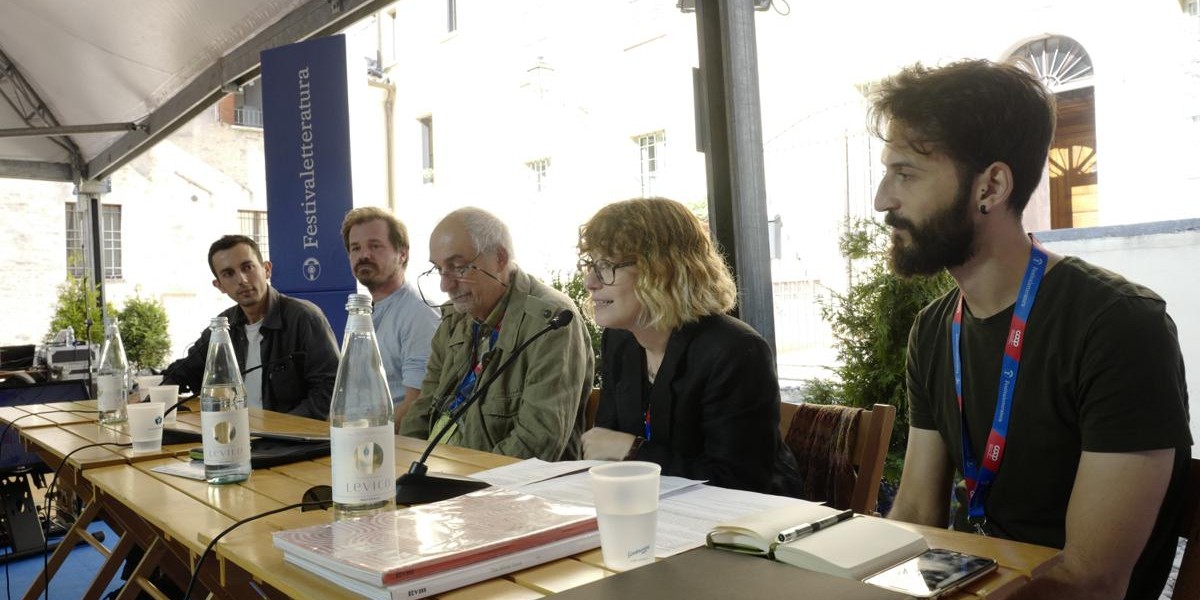
Michele Smargiassi, Piergiorgio Casotti and Elvis Malaj in conversation with Rvm Magazine
There are two main questions posed in the event moderated by the editorial staff of Rvm Magazine: is the approach to photography and texts better if fast or slow? Is contamination between languages useful?
The first to respond is the photojournalist Michele Smargiassi. He said that it is wrong to try to isolate the fast and slow in photography, giving the examples of photographers in search of the perfect shot or those who work in the same place for a year to really experience what life is really like in a place. To get that perfect Kodak moment, you need to wait for hours on end. Another problem with modern photojournalism is that photography is now ubiquitous and anyone with a phone in their hand can be a direct witness to an event and is much faster than traditional media. The result is that the figure of the journalist is considered somewhat useless, but it is actually the slow part of the work that remains: listening to witnesses, combining photographs with other information and then assembling the final report ready to be published
The second to speak on the topic was photographer Piergiorgio Casotti who adores slowness and reflects on this sensation in his projects. For his documentary Arctic Spleen, in which he explores the incredibly high suicide rate about young people in Greenland, where he spent long periods of time living in communities in the ice deserts.
Elvis Malaj, a short story writer of Albanian origin, is the last to speak on the topic, switching from photography to writing. Malaj is convinced that slowness is a fundamental part of writing because it takes time to separate the text from the story in which it is now immersed.
The speakers are all in agreement on the second theme: humankind is logo-centric, the word is stronger than any other means of communication, but it is often not enough to tell stories given that it can’t show things that only a photo can. In photo reports by the likes of Piergiorgio Casotti, photographs are combined with a logbook or scripts to make the story more immersive.



